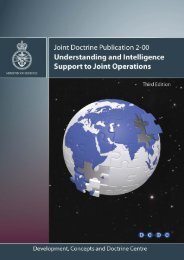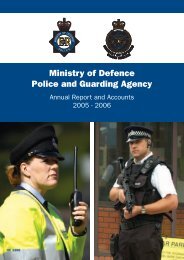JSP 464 - Ministry of Defence
JSP 464 - Ministry of Defence
JSP 464 - Ministry of Defence
You also want an ePaper? Increase the reach of your titles
YUMPU automatically turns print PDFs into web optimized ePapers that Google loves.
wherever practicable, the MOD facilitates Service personnel and families being able to live<br />
their lives the way they want. Relevant authorities – including overseas commands –<br />
place great store on having suitably approved foster families available when children have<br />
to be removed into care, <strong>of</strong>ten at short notice. Such children are not, however, dependant<br />
and there is no entitlement to consider foster children, or the potential for having foster<br />
children, when allocating SFA. In recognising this need, however, and the benefit it has<br />
for the family, the children and the community, a Service person who has been approved<br />
for fostering is eligible for suitable SFA above entitlement where surplus SFA is available.<br />
The Service person must provide authoritative evidence that they are approved for<br />
fostering when applying for SFA. The decision on any allocation will be made by Local<br />
Service Commanders with DIO Ops Accommodation staff advice on the basis <strong>of</strong><br />
availability and the local priorities for all those eligible for surplus SFA who have, or may,<br />
apply. It must be made clear to the Service person that, as with all those occupying SFA<br />
above entitlement, they would be required to vacate it if an entitled family required the<br />
accommodation.<br />
0310 Adoption. Single service personnel approved for adoption will be entitled to occupy<br />
SFA from the date <strong>of</strong> approval given the need to establish a home prior to any child being<br />
placed with the adoptive parent. The overarching priority for eligibility is laid out in<br />
<strong>JSP</strong><strong>464</strong>, Chapter 10.<br />
0311 Both Spouse/civil partners are serving members <strong>of</strong> the Armed Forces. When<br />
both spouse/civil partners are serving members <strong>of</strong> the Armed Forces either at the same or<br />
different duty stations, one spouse/civil partner is designated as PStatCat 1s and the other<br />
spouse/civil partner is designated as PStatCat5s (as defined in <strong>JSP</strong> 752, Chapter 1<br />
Section 4).<br />
a. The spouse/civil partner designated as PStatCat1s has the entitlement to SFA<br />
which they may exercise at their duty station. The spouse/civil partner designated<br />
as PStatCat 5s has no entitlement to SFA (but is entitled to SLA if they declare their<br />
intention to serve unaccompanied at a different duty station).<br />
b. Where a Service couple have duty stations within 100 miles (travelling distance)<br />
<strong>of</strong> each other, the Cat 1s may apply on an eligible basis for surplus SFA at the<br />
midway point between the duty station <strong>of</strong> the Cat 1s and the Cat 5s when both <strong>of</strong><br />
the following criteria are met.<br />
(1) Surplus SFA is available at a location midway between the two duty<br />
stations. (There is no entitlement to SSFA); and<br />
(2) Where the location <strong>of</strong> the SFA at the Cat 1s duty station precludes the Cat<br />
5s from commuting to his/her place <strong>of</strong> duty.<br />
If granted, the Cat 1s will occupy the property on a “ring fenced” 9 surplus licence<br />
until the effective date <strong>of</strong> their next assignment, when a new application will have to<br />
be made.<br />
Where midway surplus SFA is occupied, the following restrictions apply:<br />
(1) there will be no entitlement to SLA at either duty station for the personnel;<br />
(2) Maximum distances for travel claims will apply (in accordance with <strong>JSP</strong><br />
752);<br />
(3) Married Service personnel applying for surplus SFA at the midway location<br />
must have at least 6 months to serve at their respective units.<br />
9 “ring fenced” indicates that the property has been allocated to the Service person for the duration <strong>of</strong> their assignment and they would<br />
only be moved for the same reasons as an entitled Service person.<br />
As at 13 Jul 12 3- 3



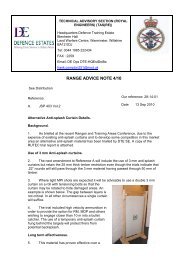

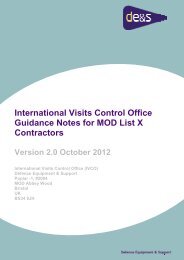

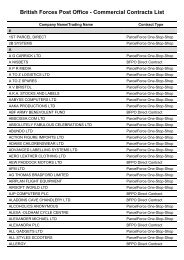

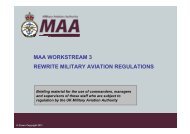

![MAA Regulatory Publications - FAQs PDF [37.3 KB]](https://img.yumpu.com/5906104/1/184x260/maa-regulatory-publications-faqs-pdf-373-kb.jpg?quality=85)
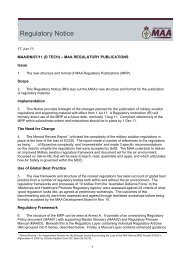
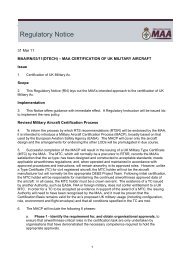
![3750 edition 6 PDF [263.5 KB] - Ministry of Defence](https://img.yumpu.com/5901071/1/184x260/3750-edition-6-pdf-2635-kb-ministry-of-defence.jpg?quality=85)
